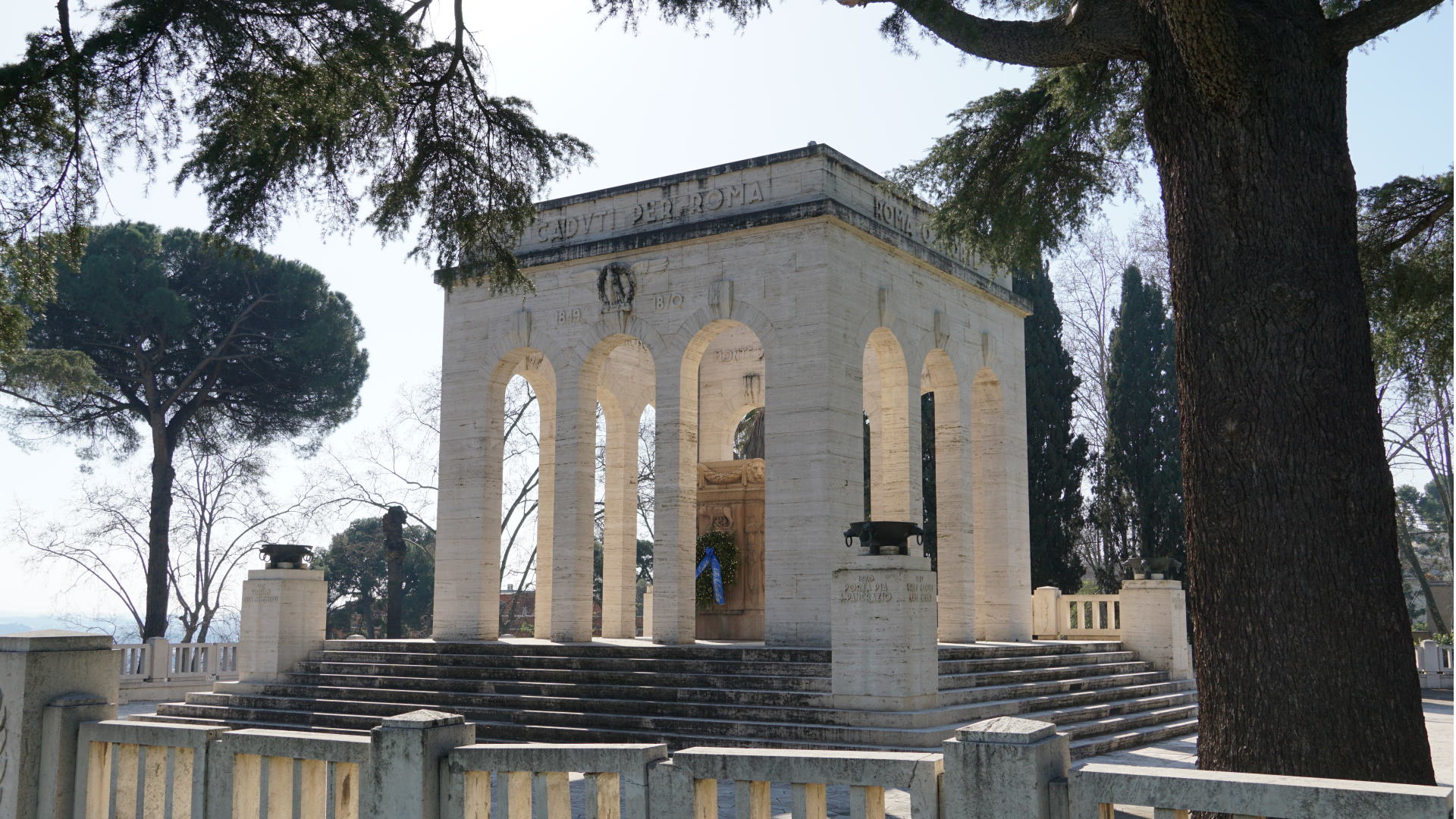
Eine Stadt besteht nicht nur aus Denkmälern, Palästen und Kirchen, sondern auch aus der Reflexion ihrer Geschichten und des Lebens, das sie durchläuft. Das Leben der Römer war seit jeher von Ritualen, Festen, Jahrestagen und Feiern geprägt: ein dichter Kalender mit festen Terminen, die mit ihrer Fülle an Traditionen eine Gelegenheit zur religiösen und zivilen Besinnung, zur Begegnung, zum Austausch und zum Vergnügen boten, Saison für Saison.
Einige dieser Ereignisse haben dem Zahn der Zeit nicht standgehalten oder haben etwas von dem Gefühl des vollkommenen Staunens verloren, das sie den Römern und den zahlreichen Besuchern der Stadt zu vermitteln wussten. Andere hingegen erfreuen sich nach wie vor bester Gesundheit und wurden sogar mit neuen Elementen angereichert. Und wieder andere, obwohl sie erst in jüngerer Zeit entstanden sind, gehören heute zu den modernen und zeitgenössischen „Traditionen“ der Stadt.
Um Rom vollständig zu erleben und sich als Teil seiner Geschichte zu fühlen, erzählen wir Ihnen Monat für Monat von einigen besonderen Tagen und Momenten der Stadt, von heute und von gestern: es sind die am meisten herbeigesehnten oder erwarteten Termine oder auch einfach nur die kuriosesten.
-
Mariä Lichtmess, 2. Februar
-
Heiliger Blasius, 3. Februar
-
Die Römische Republik, 9. Februar
-
Valentinstag, 14. Februar
-
Karneval, 12-17. Februar
Mariä Lichtmess, 2. Februar
An der Schwelle zwischen dem Winter und dem nahenden Frühling war der Februar im alten Rom mit Reinigungsriten verbunden, um das Wiedererwachen der Natur zu feiern – nicht zufällig leitet sich sein Name von „februare“ ab, was im Lateinischen so viel wie reinigen, sühnen bedeutet. Fackeln und brennende Kerzen waren ein fester Bestandteil der Feierlichkeiten zu Ehren von Juno Februata oder Faunus Lupercus, der Besitzerin der antiken Lupercalien. Auch wenn diese Tradition eine neue Bedeutung erhielt, wurde sie später vom Fest Mariä Lichtmess übernommen, das in der christlichen Religion an die Darstellung Jesu im Tempel und die Reinigung der Jungfrau erinnert (nach jüdischem Recht galten Frauen nach der Geburt 40 Tage lang als unrein). In der Antike versammelten sich die Gläubigen am 2. Februar bei Tagesanbruch auf dem Forum und zogen dann in einer Prozession zur Basilika Santa Maria Maggiore. Hier wurden die Kerzen gesegnet, die als Symbol für das „Licht Christi, das die Menschen erleuchtet“ gelten. Seit dem 16. Jahrhundert war die Bruderschaft der Kirche Santa Maria dell’Orto in Trastevere, die sozusagen die Kirche des Flusses war, da sie noch nicht durch den Komplex San Michele vom Tiber getrennt war, die Hauptverantwortliche für die Lichtmessfeier. Alle Zünfte, die mit dem Wasser zu tun hatten (d.h. Kaufleute, Müller, Entlader und Zöllner sowie die Besatzungen der Boote und Schiffe), gehörten zu dieser Bruderschaft und erhielten zu diesem Anlass gesegnete Kerzen, die sie bei Gefahr, Krankheit, Sturm und Unwetter anzünden konnten. Die uralte Tradition der „Canderola dei Fiumaroli“ wurde 1983 von der Erzbruderschaft wiederbelebt. An dem Sonntag, der dem 2. Februar am nächsten liegt, werden gesegnete Kerzen an die Gläubigen und an alle, die am Tiber leben und arbeiten, verteilt, von den Schiffern bis zu den Sportlern in den nautischen Vereinen.
Heiliger Blasius, 3. Februar
Arzt, Philosoph, Bischof von Sebaste (damals eine wichtige Stadt in Kleinarmenien) und schließlich verehrter Einsiedler: auf Michelangelos Fresken in der Sixtinischen Kapelle hält der heilige Blasius einen eisernen Kamm in der Hand, das Instrument, mit dem seine Henker ihm das Fleisch zerschnitten. Inmitten der Qualen des Martyriums und vor seiner endgültigen Enthauptung konnte der Heilige noch ein letztes Wunder vollbringen. Er rettete das Leben eines kleinen Jungen, der an einer Fischgräte erstickt war, die ihm im Hals steckte. Aus diesem Grund ist Blasius der Schutzpatron der Halskrankheiten sowie der Matratzenmacher und Kardenmacher. Die antiken Fresken, die in der unteren Basilika von San Clemente erhalten sind, und die zahlreichen Kirchen, deren Schutzpatron er im Mittelalter war, zeugen von der weiten Verbreitung seines Kultes in Rom seit dem 11. Jahrhundert. Zu den bis heute erhaltenen Kirchen gehören die Kirche Santi Biagio e Carlo ai Catinari und die schöne kleine Kirche an der Via Giulia, seit dem 19. Jahrhundert die Nationalkirche der Armenier, den Römern besser bekannt als San Biagio della Pagnotta. Die farbenfrohe Bezeichnung stammt von dem Brot, das die Mönche am Festtag des Heiligen an die Armen verteilten und das den Gläubigen auch heute noch in Form von kleinen gesegneten Broten angeboten wird. Doch neben dem Sammeln der kleinen Brote, denen wundersame Heilkräfte zugeschrieben werden, strömen die Gläubigen an jedem 3. Februar in die kleine Kirche, um Kerzen für den Heiligen anzuzünden und seine Fürsprache gegen alle Halskrankheiten zu erbitten. Bei dieser Gelegenheit wird die wertvolle Reliquie des Halsfragments des Heiligen ausgestellt, die den Rest des Jahres im Vatikan in der Schatzkammer von St. Peter aufbewahrt wird.
Die Römische Republik, 9. Februar
„Ein Achtundvierziger ist geschehen“ ist ein italienischer Ausdruck, der noch heute verwendet wird, um eine Situation plötzlichen Chaos, unerwarteten Aufruhrs zu beschreiben. Die Redewendung geht auf den revolutionären Sturm zurück, der 1848 über Europa hinwegfegte und von Italien ausging und auch Rom erfasste. Was den Aufruhr in der Stadt anheizte, war vor allem der rasche Rückzug des Papstes nach seiner anfänglichen Unterstützung für die patriotische Sache Italiens. Die Ermordung des päpstlichen Ministerpräsidenten Pellegrino Rossi auf den Stufen des Palazzo della Cancelleria im November, bei der die die Volksmenge bis zum Palazzo del Quirinale randalierte, veranlasste Pius IX. dazu, sich nach Gaeta zu flüchten, wo er bei Ferdinand II. von Bourbon zu Gast war, von wo aus er Exkommunikationen aussprach und die katholischen Mächte um Hilfe bat. Rom, das ohne Regierung dastand, veränderte innerhalb weniger Monate sein Gesicht. Am 9. Februar 1849 wurde die Ankündigung, dass das Papsttum „de facto und de jure aus der weltlichen Regierung des römischen Staates herausgefallen“ sei, von den vor dem Palazzo Senatorio versammelten Römern unter festlichen Glockenschlägen und Kanonenschüssen aus der Engelsburg enthusiastisch begrüßt. Die kleine Römische Republik war nur von kurzer Dauer, denn sie wurde am 4. Juli von den Truppen Louis Napoleon Bonapartes, des späteren Napoleon III, besiegt. Sie war jedoch das erste echte Beispiel für eine fortschrittliche Demokratie – mit allgemeinem Wahlrecht, Religions- und Meinungsfreiheit, Abschaffung der Todesstrafe und der Folter – und war Schauplatz des Zusammentreffens und der Konfrontation vieler Schlüsselfiguren des Risorgimento: Garibaldi und Mazzini, aber auch Bixio, Mameli und Frauen wie Cristina Trivulzio di Belgiojoso. Auf dem Janiculum-Hügel, wo Garibaldis Männer den letzten Versuch unternahmen, die Stadt gegen die französischen Truppen zu verteidigen, ehrt das Museo della Repubblica Romana e della Memoria Garibaldina - Museum der Römischen Republik und der Erinnerung an Garibaldi den Jahrestag jedes Jahr mit Sonderöffnungen und Führungen. Anschließend wird im nahe gelegenen Mausoleo Ossario Garibaldino ein symbolischer Lorbeerkranz niedergelegt, in dem die Gefallenen der Kämpfe um Roms Hauptstadt zwischen 1849 und 1870 ruhen.
Valentinstag, 14. Februar
Die zerstörerische und manchmal ergreifende Schönheit Roms geht direkt ins Herz. Das ewig „romantische“ Schicksal, das die Stadt zu einer Art Hauptstadt der Liebenden macht, zum Schauplatz großer sentimentaler Geschichten, wurzelt in den Nebeln der Zeit, in den Legenden, die sich um ihre Entstehung ranken. Es ist sicher kein Zufall, dass das größte sakrale Bauwerk des antiken Roms, das Hadrian auf dem Forum errichten ließ, einem besonderen göttlichen Paar gewidmet war: Roma Aeterna und Venus, Göttin der Liebe und der Schönheit sowie Mutter des Aeneas und Stammmutter von Romulus und Remus. Ebenfalls in Rom wurde einige Jahrhunderte später am 14. Februar der Heilige gemartert, der aufgerufen war, jedes Jahr seine „Liebeswunder“ zu erneuern. Die antiken Quellen erwähnen mindestens zwei Heilige mit dem Namen Valentin, einen römischen Presbyter und den berühmteren Bischof von Terni, und die Debatte über ihre Biografien ist bis heute nicht abgeschlossen. Der Kult und der Ruhm von Valentin, ob römisch oder aus Terni, verbreiteten sich schnell in ganz Europa. Der suggestive Glaube, dass am 14. Februar die Vögel in Erwartung der Frühlingsgeburten umeinander werben, und der Einfluss berühmter Dichter wie Geoffrey Chaucer und William Shakespeare trugen dazu bei, dass der Festtag der Heiligen immer beliebter wurde und sich im Laufe der Zeit zu einem weltweiten Pop-Event entwickelte. Heutzutage kann eine romantische Tour durch Rom nicht ohne magische Orte wie den Orangengarten oder den Pincio auskommen. Man kann auch der Macht der Liebe huldigen, indem man an dem kleinen Brunnen neben dem Trevi-Brunnen Halt macht, dessen Wasser vor Verrat und Versuchung schützen soll, oder an der Scalinata degli Innamorati im Stadtteil Garbatella. Oder in der Kirche Santa Maria in Cosmedin, wo die Reliquie eines Schädels des Heiligen Valentin, die in einem Schrein aufbewahrt wird und mit roten Rosen geschmückt ist, jeden 14. Februar den Gläubigen gezeigt wird.
Karneval, 12-17. Februar (beweglicher Feiertag zwischen Februar und März)
Eine Handvoll Tage voller Streiche, Regelverstöße, Maskeraden und ungezügelter Freude vor Beginn der Fastenzeit und ihrer vierzigtägigen Buße und Reinigung in Erwartung von Ostern. Obwohl seine Ursprünge auf die heidnischen Feste des klassischen Griechenlands und des alten Roms zurückgehen, ist der Karneval im Wesentlichen ein Fest, das mit der katholischen und christlichen Welt verbunden ist. Und es war ein Papst, der Rom in der zweiten Hälfte des 15. Jahrhunderts in die Welthauptstadt des sorglosen Wahnsinns verwandelte. Nachdem er die päpstliche Residenz in den von ihm errichteten Palast an der Piazza Venezia verlegt hatte, konzentrierte Paul II. den Großteil der Karnevalsfeiern, die bis dahin im Testaccio-Gebiet stattfanden, auf das historische Zentrum und insbesondere auf die Via Lata (die heutige Via del Corso). Zwischen Maskenumzügen, allegorischen Wagen, Turnieren und Lanzenstechen, den mit Spannung erwarteten Berber-Pferderennen und dem Moccoletti-Festival bezog das Fest die gesamte Bevölkerung ein und zog Künstler, Literaten, Reisende und Neugierige aus der ganzen Welt an. Nachdem die zeitliche Macht der Päpste geschwunden war, überzeugten die zahlreichen Zwischenfälle zwischen Zuschauern und Teilnehmern die Savoyer davon, der rücksichtslosen und hemmungslosen Unterhaltung Einhalt zu gebieten. Der fröhlich-subversive Geist des Karnevals ist jedoch nicht ganz erloschen, und auch heute noch ist die Stadt mit Masken und Konfetti geschmückt, verkleidet sich für die Feierlichkeiten und bietet Veranstaltungen für Kinder und Erwachsene in kulturellen Einrichtungen und städtischen Räumen.
März in Rom. Verabredung mit der Tradition (heute wie in der Vergangenheit)
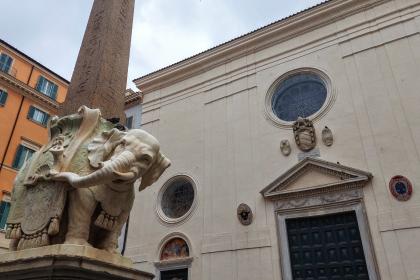
April in Rom. Verabredung mit der Tradition (heute wie in der Vergangenheit)

Der Tiber
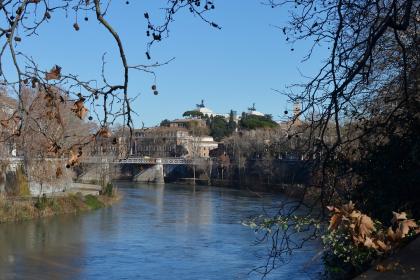
Secondo la leggenda, la storia di Roma comincia proprio da qui
Church of Santa Maria dell’Orto
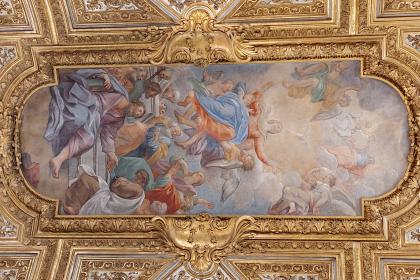
 Condividi
Condividi
Monumentaler Komplex San Michele a Ripa
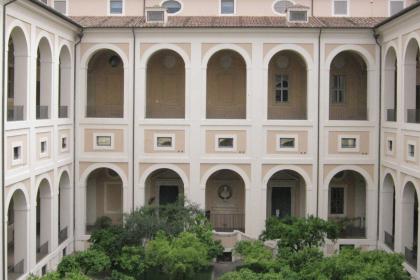
 Condividi
Condividi
Open-air Renaissance
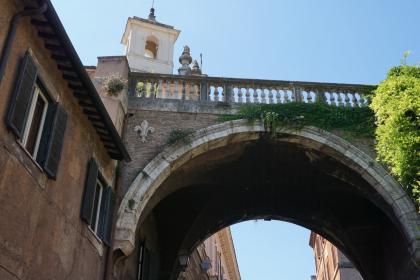
Via Giulia and the Florentine Quarter
Kirche San Biagio degli Armeni (San Biagio della Pagnotta)
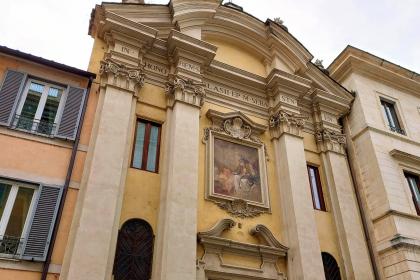
 Condividi
Condividi
Piazza del Campidoglio (Campidoglio Platz)
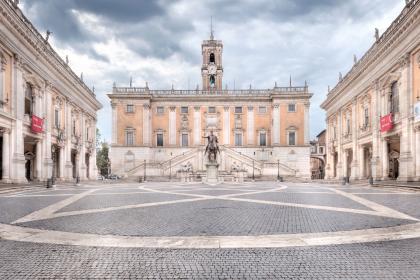
 Condividi
Condividi
Der Janiculum-Hügel
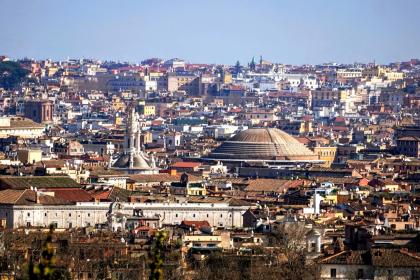
 Condividi
Condividi
Seven romantic things to do in Rome
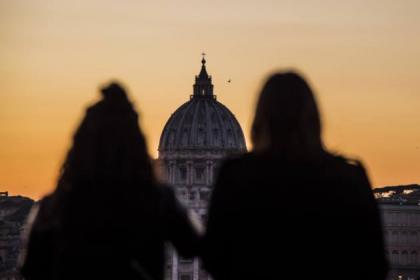
Walks, sunsets and dates for falling in love, dreaming and collecting memories
Carlotta-Brunnen und Treppe der Liebenden

 Condividi
Condividi
Basilika von Santa Maria in Cosmedin
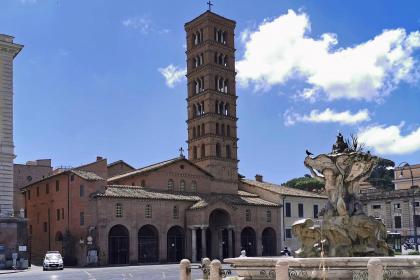
 Condividi
Condividi
Der antike römische Karneval
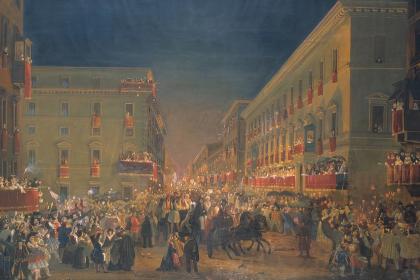
DIE TRADITIONELLEN REZEPTE DES RÖMISCHEN KARNEVALS

Via del Corso
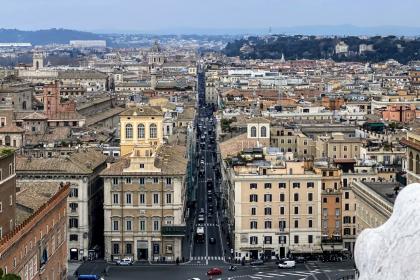
 Condividi
Condividi
Piazza Venezia
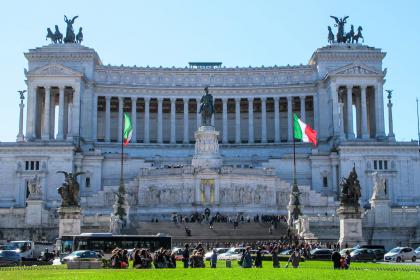
 Condividi
Condividi











































